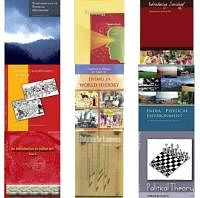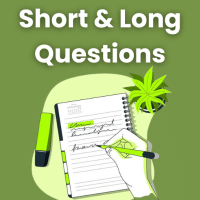Humanities/Arts Exam > Humanities/Arts Questions > Principle: Copyright law protects only work. ...
Start Learning for Free
Principle: Copyright law protects only work. 'Work' means cinemato graphic film but does not include performance by an actor in a cine matographic film.
Facts: Alia Bhatt acted in a movie
Facts: Alia Bhatt acted in a movie
- a)The acting of Alia Bhatt cannot be protected under copyright law
- b)The acting of Alia Bhatt can be protected under copyright law as professional work
- c)The acting of Alia Bhatt can be protected under copyright law only as an artistic work
- d)The acting of Alia Bhatt can be protected as film producer's work
Correct answer is option 'B'. Can you explain this answer?
| FREE This question is part of | Download PDF Attempt this Test |
Most Upvoted Answer
Principle: Copyright law protects only work. Work means cinemato graph...
In the present case, the acting of Alia Bhatt cannot be protected under copyright law. The object of copyright law is to support creators, writers, specialists and fashioners to make unique works by compensating them with the select appropriate for a restricted period to misuse the work for the fiscal increase.
Federal copyright law protects original creative works such as paintings, writing, architecture, movies, software, photos, dance, and music. A work must meet certain minimum requirements to qualify for copyright protection. The length of protection also varies depending on when the work was created or first published.
Federal copyright law protects original creative works such as paintings, writing, architecture, movies, software, photos, dance, and music. A work must meet certain minimum requirements to qualify for copyright protection. The length of protection also varies depending on when the work was created or first published.
Attention Humanities/Arts Students!
To make sure you are not studying endlessly, EduRev has designed Humanities/Arts study material, with Structured Courses, Videos, & Test Series. Plus get personalized analysis, doubt solving and improvement plans to achieve a great score in Humanities/Arts.

|
Explore Courses for Humanities/Arts exam
|

|
Similar Humanities/Arts Doubts
Principle: Copyright law protects only work. Work means cinemato graphic film but does not include performance by an actor in a cine matographic film.Facts: Alia Bhatt acted in a moviea)The acting of Alia Bhatt cannot be protected under copyright lawb)The acting of Alia Bhatt can be protected under copyright law as professional workc)The acting of Alia Bhatt can be protected under copyright law only as an artistic workd)The acting of Alia Bhatt can be protected as film producers workCorrect answer is option 'B'. Can you explain this answer?
Question Description
Principle: Copyright law protects only work. Work means cinemato graphic film but does not include performance by an actor in a cine matographic film.Facts: Alia Bhatt acted in a moviea)The acting of Alia Bhatt cannot be protected under copyright lawb)The acting of Alia Bhatt can be protected under copyright law as professional workc)The acting of Alia Bhatt can be protected under copyright law only as an artistic workd)The acting of Alia Bhatt can be protected as film producers workCorrect answer is option 'B'. Can you explain this answer? for Humanities/Arts 2024 is part of Humanities/Arts preparation. The Question and answers have been prepared according to the Humanities/Arts exam syllabus. Information about Principle: Copyright law protects only work. Work means cinemato graphic film but does not include performance by an actor in a cine matographic film.Facts: Alia Bhatt acted in a moviea)The acting of Alia Bhatt cannot be protected under copyright lawb)The acting of Alia Bhatt can be protected under copyright law as professional workc)The acting of Alia Bhatt can be protected under copyright law only as an artistic workd)The acting of Alia Bhatt can be protected as film producers workCorrect answer is option 'B'. Can you explain this answer? covers all topics & solutions for Humanities/Arts 2024 Exam. Find important definitions, questions, meanings, examples, exercises and tests below for Principle: Copyright law protects only work. Work means cinemato graphic film but does not include performance by an actor in a cine matographic film.Facts: Alia Bhatt acted in a moviea)The acting of Alia Bhatt cannot be protected under copyright lawb)The acting of Alia Bhatt can be protected under copyright law as professional workc)The acting of Alia Bhatt can be protected under copyright law only as an artistic workd)The acting of Alia Bhatt can be protected as film producers workCorrect answer is option 'B'. Can you explain this answer?.
Principle: Copyright law protects only work. Work means cinemato graphic film but does not include performance by an actor in a cine matographic film.Facts: Alia Bhatt acted in a moviea)The acting of Alia Bhatt cannot be protected under copyright lawb)The acting of Alia Bhatt can be protected under copyright law as professional workc)The acting of Alia Bhatt can be protected under copyright law only as an artistic workd)The acting of Alia Bhatt can be protected as film producers workCorrect answer is option 'B'. Can you explain this answer? for Humanities/Arts 2024 is part of Humanities/Arts preparation. The Question and answers have been prepared according to the Humanities/Arts exam syllabus. Information about Principle: Copyright law protects only work. Work means cinemato graphic film but does not include performance by an actor in a cine matographic film.Facts: Alia Bhatt acted in a moviea)The acting of Alia Bhatt cannot be protected under copyright lawb)The acting of Alia Bhatt can be protected under copyright law as professional workc)The acting of Alia Bhatt can be protected under copyright law only as an artistic workd)The acting of Alia Bhatt can be protected as film producers workCorrect answer is option 'B'. Can you explain this answer? covers all topics & solutions for Humanities/Arts 2024 Exam. Find important definitions, questions, meanings, examples, exercises and tests below for Principle: Copyright law protects only work. Work means cinemato graphic film but does not include performance by an actor in a cine matographic film.Facts: Alia Bhatt acted in a moviea)The acting of Alia Bhatt cannot be protected under copyright lawb)The acting of Alia Bhatt can be protected under copyright law as professional workc)The acting of Alia Bhatt can be protected under copyright law only as an artistic workd)The acting of Alia Bhatt can be protected as film producers workCorrect answer is option 'B'. Can you explain this answer?.
Solutions for Principle: Copyright law protects only work. Work means cinemato graphic film but does not include performance by an actor in a cine matographic film.Facts: Alia Bhatt acted in a moviea)The acting of Alia Bhatt cannot be protected under copyright lawb)The acting of Alia Bhatt can be protected under copyright law as professional workc)The acting of Alia Bhatt can be protected under copyright law only as an artistic workd)The acting of Alia Bhatt can be protected as film producers workCorrect answer is option 'B'. Can you explain this answer? in English & in Hindi are available as part of our courses for Humanities/Arts.
Download more important topics, notes, lectures and mock test series for Humanities/Arts Exam by signing up for free.
Here you can find the meaning of Principle: Copyright law protects only work. Work means cinemato graphic film but does not include performance by an actor in a cine matographic film.Facts: Alia Bhatt acted in a moviea)The acting of Alia Bhatt cannot be protected under copyright lawb)The acting of Alia Bhatt can be protected under copyright law as professional workc)The acting of Alia Bhatt can be protected under copyright law only as an artistic workd)The acting of Alia Bhatt can be protected as film producers workCorrect answer is option 'B'. Can you explain this answer? defined & explained in the simplest way possible. Besides giving the explanation of
Principle: Copyright law protects only work. Work means cinemato graphic film but does not include performance by an actor in a cine matographic film.Facts: Alia Bhatt acted in a moviea)The acting of Alia Bhatt cannot be protected under copyright lawb)The acting of Alia Bhatt can be protected under copyright law as professional workc)The acting of Alia Bhatt can be protected under copyright law only as an artistic workd)The acting of Alia Bhatt can be protected as film producers workCorrect answer is option 'B'. Can you explain this answer?, a detailed solution for Principle: Copyright law protects only work. Work means cinemato graphic film but does not include performance by an actor in a cine matographic film.Facts: Alia Bhatt acted in a moviea)The acting of Alia Bhatt cannot be protected under copyright lawb)The acting of Alia Bhatt can be protected under copyright law as professional workc)The acting of Alia Bhatt can be protected under copyright law only as an artistic workd)The acting of Alia Bhatt can be protected as film producers workCorrect answer is option 'B'. Can you explain this answer? has been provided alongside types of Principle: Copyright law protects only work. Work means cinemato graphic film but does not include performance by an actor in a cine matographic film.Facts: Alia Bhatt acted in a moviea)The acting of Alia Bhatt cannot be protected under copyright lawb)The acting of Alia Bhatt can be protected under copyright law as professional workc)The acting of Alia Bhatt can be protected under copyright law only as an artistic workd)The acting of Alia Bhatt can be protected as film producers workCorrect answer is option 'B'. Can you explain this answer? theory, EduRev gives you an
ample number of questions to practice Principle: Copyright law protects only work. Work means cinemato graphic film but does not include performance by an actor in a cine matographic film.Facts: Alia Bhatt acted in a moviea)The acting of Alia Bhatt cannot be protected under copyright lawb)The acting of Alia Bhatt can be protected under copyright law as professional workc)The acting of Alia Bhatt can be protected under copyright law only as an artistic workd)The acting of Alia Bhatt can be protected as film producers workCorrect answer is option 'B'. Can you explain this answer? tests, examples and also practice Humanities/Arts tests.

|
Explore Courses for Humanities/Arts exam
|

|
Suggested Free Tests
Signup for Free!
Signup to see your scores go up within 7 days! Learn & Practice with 1000+ FREE Notes, Videos & Tests.



















